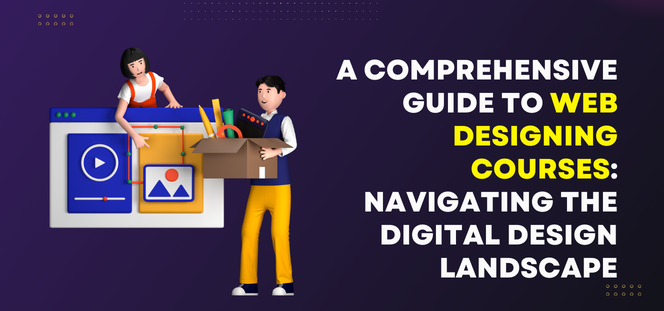
In today’s digital age, a strong online presence is crucial for individuals and businesses alike. A well-designed website is often the first point of contact between a user and a brand. As a result, the demand for skilled web designers has surged, making web design courses more relevant than ever. This guide aims to provide a comprehensive overview of web designing courses, helping aspiring designers navigate the vast landscape of digital design education.
- Understanding the Basics: Before diving into specific courses, it’s essential to grasp the fundamentals of web design. A solid foundation in HTML, CSS, and JavaScript is often a prerequisite for most courses. These languages form the backbone of web development and enable designers to create visually appealing and interactive websites.
- Key Elements of Web Design Courses: a. Graphic Design Fundamentals: A good web designer should possess a keen understanding of graphic design principles. Courses covering topics like color theory, typography, and layout design are invaluable in shaping a designer’s creative skills.
b. User Experience (UX) and User Interface (UI) Design: UX and UI design are integral components of web design courses. UX focuses on understanding user behavior, while UI deals with the visual elements that users interact with. Courses in these areas help designers create websites that are not only aesthetically pleasing but also user-friendly.
c. Responsive Design: With the proliferation of mobile devices, responsive design is crucial. Courses that teach how to create websites that adapt to various screen sizes ensure that designers can deliver a seamless user experience across different devices.
d. Content Management Systems (CMS): Familiarity with CMS platforms like WordPress, Drupal, or Joomla is often beneficial. Courses that cover CMS basics empower designers to efficiently manage and update website content.
e. Web Development Frameworks: Some courses delve into popular web development frameworks like Bootstrap or React. These frameworks streamline the development process and enhance a designer’s ability to create dynamic and feature-rich websites.
- Online vs. Offline Courses: Aspiring web designers can choose between online and offline courses. Online courses offer flexibility, allowing students to learn at their own pace. Platforms like Udemy, Coursera, and Skillshare host a plethora of web design courses. On the other hand, offline courses, offered by universities or specialized training centers, provide a more structured and interactive learning environment.
- Building a Portfolio: Regardless of the chosen course, creating a strong portfolio is essential for showcasing one’s skills to potential employers or clients. Many courses include practical projects and assignments that can be included in a portfolio, demonstrating the designer’s ability to apply theoretical knowledge in real-world scenarios.
- Staying Updated: Web design is a dynamic field, with trends and technologies constantly evolving. A good course should equip designers with the skills to adapt to these changes. Additionally, staying connected to design communities, attending workshops, and participating in web design conferences can keep designers informed about the latest industry developments.
Conclusion: Embarking on a web design course is a rewarding journey that opens doors to a world of creativity and innovation. By understanding the basics, choosing the right courses, and continually updating skills, aspiring designers can carve a successful career path in the ever-evolving realm of web design. Whether pursuing online or offline education, the key is to remain curious, practice consistently, and embrace the exciting challenges of the digital design landscape.
Leave a comment